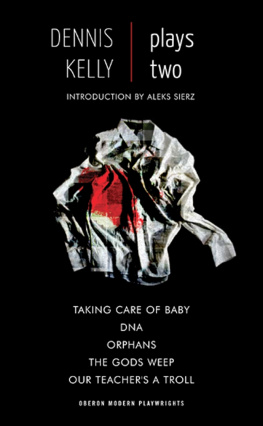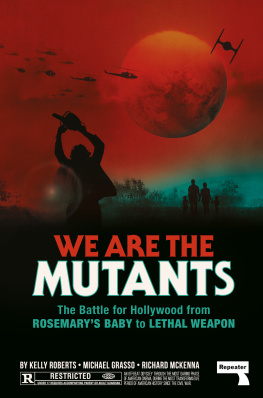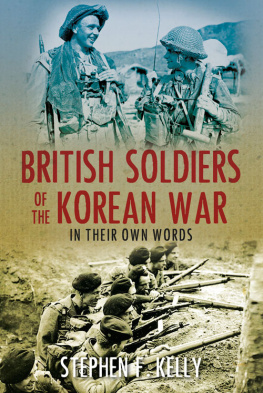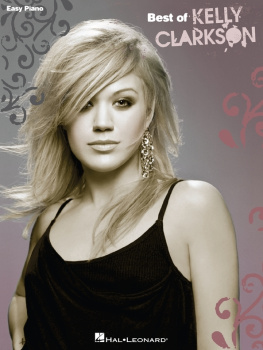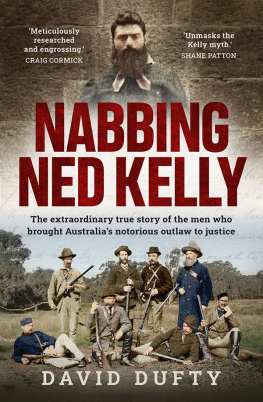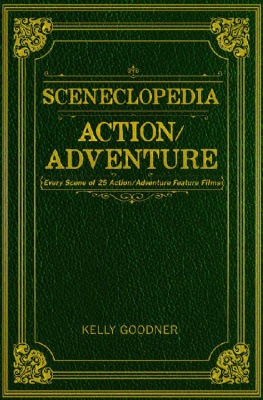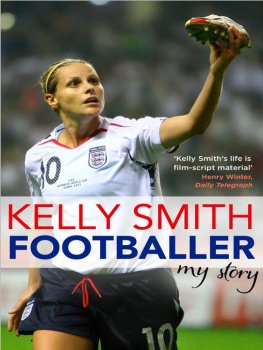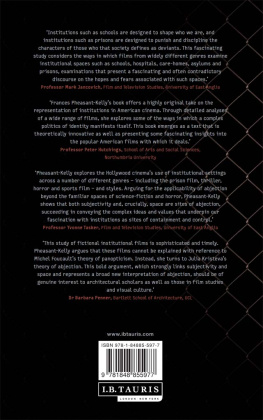First published in the UK in 2013 by
Intellect, The Mill, Parnall Road, Fishponds, Bristol, BS16 3JG, UK
First published in the USA in 2013 by
Intellect, The University of Chicago Press, 1427 E. 60th Street,
Chicago, IL 60637, USA
Copyright 2013 Intellect Ltd
All rights reserved. No part of this publication may be reproduced, stored in a retrieval system, or transmitted, in any form or by any means, electronic, mechanical, photocopying, recording, or otherwise, without written permission.
A catalogue record for this book is available from the British Library.
Cover designer: Holly Rose
Copy-editor: MPS Technologies
Index: Lyn Greenwood
Production manager: Jelena Stanovnik
Typesetting: Planman Technologies
ISBN: 978-1-84150-636-4
eISBN: 978-1-78320-164-8
Printed and bound by Hobbs, UK
For Lauren, Alice and Ivy
Figure 1.1: (1910). Promotional poster for The Story of the Kelly Gang. National Film & Sound Archive: 3613211014.
Figure 1.2: (1906). Promotional poster for The Story of the Kelly Gang. National Film & Sound Archive: 3504291054.
Figure 1.3: (1910). The Notorious Kelly Gang, The Story of the Kelly Gang. National Film & Sound Archive: 5828574.
Figure 1.4: (1920). 1 March. Promotional poster for The Kelly Gang in The Theatre Magazine: 29.
Figure 1.5: (1934). Close-Up Portrait of Hay Simpson. National Film & Sound Archive: 5747374.
Figure 1.6: (1948). When the Kellys Rode Ban Lifted. National Film & Sound Archive: 5616726.
Figure 1.7: (1947). A Message to Kelly: Ben Crowe and Bob Chitty. National Film & Sound Archive: 401361.
Figure 2.1: Publicity poster (Ned, 2003).
Figure 3.1: John Chidley (1874). Edward Kelly in Boxing Trunks. Private collection.
Figure 3.2: Thomas Carrington (1880) 26 August. Moderation. The Melbourne Punch: 85.
Figure 3.3: Thomas Carrington (1880) 14 August. Kelly in the Guards Van En Route to Melbourne. The Australasian Sketcher: 200.
Figure 3.4: (1880) 10 July. Parting of Ned Kelly and His Cousin, Miss Lloyd. The Australian Pictorial Weekly: Front Cover.
Figure 4.1: Alfred May (1878) 23 November. The Bushranging Tragedy. The Australasian Sketcher: Front Cover.
Figure 4.2: (1874). Ned Kelly Mug Shot. Victorian Police Records. Melbourne: S8369P1.
Figure 4.3: (1879) 10 July. Where are the Kellys? Ovens and Murray Advertiser: 20.
Figure 4.4: Julian Ashton (1881) 18 June. The Black Tracker. The Australasian Sketcher: Supplement Edition.
Figure 4.5: Graeme Rutherford and Gregor MacAlpine (1971) 1 July. The Iron Outlaw and Steele Sheila. Sunday Observer: 24.
Figure 4.6: The Declaration of North-Eastern Victoria (The Last Outlaw, 1980).
Figure 4.7: Thomas Carrington (1879). The Outlaw Premier in Ian Jones and Thomas Carringtons The Last Stand: 10.
Figure 4.8: Thomas Carrington (1879) 16 January. The Berry Broker. The Melbourne Punch.
Figure 5.1: The sunny terrain (When the Kellys Rode, 1934).
Figure 5.2: Chinese hostage stands centre (The Story of the Kelly Gang, 1906).
Figure 6.1: News reports (The Glenrowan Affair, 1951).
Figure 6.2: Thomas Carrington (1880) 3 July. The Murder of Sherritt. Illustrated Australian News: 97.
Figure 6.3: (1880) 10 July. The Kellys at Glenrowan, Preparing to Smash the Train. Australian Pictorial Weekly: 41.
Figure 6.4: (1906). Pulling up the Line at Glenrowan The Story of the Kelly Gang. National Film & Sound Archive: 4510697.
Figure 6.5: Thomas Carrington (1880) 29 June. Ned Kelly After the Removal of His Armour. National Library of Australia. Canberra: 8420640.
Figure 6.6: Ned lies mortally wounded (The Last Outlaw, 1980).
Figure 6.7: Julian Ashton (1880) 28 August. Ned Kelly in the Dock. Illustrated Australian News: 145.
Figure 6.8: Ned arrives on the gallows (The Last Outlaw, 1980).
Figure 6.9: Thomas Carrington (1880) 20 November. Last Scene of the Kelly Drama: The Criminal on the Scaffold. The Australasian Sketcher: Front Cover.
In the course of my academic career, a reprint of a 1910 poster of The Story of the Kelly Gang (Johnson & Gibson) has badged my office, announcing my identity as film historian. Composed of various stills of key scenes, the most prominent image is of a well-armoured Kelly, aiming both his guns directly at the viewer. While the long shot rather dilutes any menace, the pose nevertheless links this still to that customary staple of history cinema classes, the Great Train Robbery (1903), and so to the broader history of national and international film as Stephen Gaunson points out.
I have been preoccupied by this poster whilst reading the cultural history of Kelly and his gang, across the adaptations and incarnations traced in Gaunsons engaging research. The poster seems to promote a pretty ordinary action film. Stagy and distant in the familiar mode of much early cinema, its awkwardness is the rather mundane under-achieving badness of nostalgic Australiana, rather than fetishised, cultish bad of the prized annals of trash.
At least in part as a consequence of the ordinariness of this group of films (though many would single out Mick Jaggers Kelly performance as an extraordinary moment), there has been little of the invested and informed discussion that is routinely revealed in studies of online fandom, and that might have been expected of films about such a central Australian folk hero: arguments about definitive adaptions, or canonical selections within this wider cultural lore of remakes and reworkings. Gaunsons work resources such discussion as there is more than a hint of companion in his approach, for it surveys broader cultural and academic debates around Kelly.
Australian cinema has produced popular or populist hits infrequently, and means that only rarely does a film version achieve the status of a benchmarking representation of national myths. Instead the field is left open to other cultural forms in this case novels and bush ballads. Within the circuits of ongoing Kelly-lore cultural production ghoulish preoccupations with bodily remains appear to be of greater current interest.
The status of these films as part of the historiography of Kelly preoccupies Gaunson in this study, one that animates and illuminates an overlooked area of cultural history. Whilst so much of the scholarship on Australias film history treats earlier cycles of production as quite separate from the revival and post-revival films, Gaunson traces a tangled weave of Cinema-Ned and history-Kelly intertexts, shifting significations and historical repositionings, from the pioneering beginnings of cinema until 2003. He creates a complex diachronic portrait of Kelly, where Cinema-Ned as social bandit moves in and out of focus.


